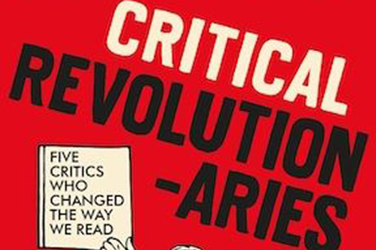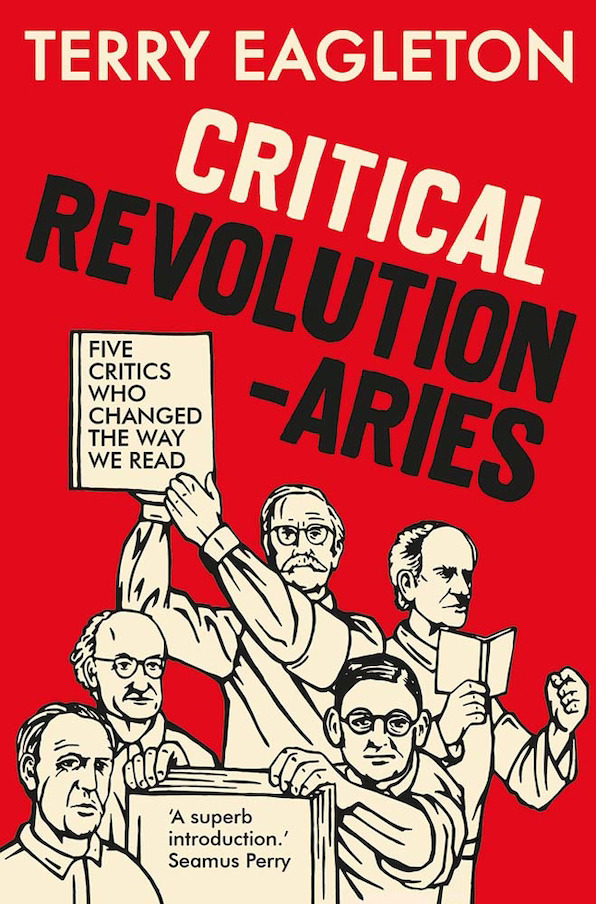
- Free Article: No
- Contents Category: Literary Studies
- Review Article: Yes
- Article Title: A so-called ‘critical revolution’
- Article Subtitle: Terry Eagleton apparaises the theorists
- Online Only: No
- Custom Highlight Text:
For generations of English literature graduates in the Anglophone world, Terry Eagleton’s name has become synonymous with literary theory, not because he has been its leading practitioner or fiercest advocate, but because he published Literary Theory: An introduction in 1983. This widely assigned primer conceals a deep ambivalence behind its innocuous title: in his conclusion, Eagleton announces that the book has been ‘less an introduction than an obituary’, in the sense that ‘literary theory’, like literature itself, only pretends to name a bounded field of enquiry. Nonetheless, the enterprise of theory rumbled on largely untroubled for two decades (who knows how many of the undergraduates assigned the book made it to the conclusion), and so After Theory (2003) was much less demure: ‘The golden age of cultural theory is long past,’ Eagleton announces on page one. In the preface to the same work he remarks, with disarming bluntness, that theory’s contemporary orthodoxy fails to ‘address itself to questions searching enough to meet the demands of our political situation.’
- Featured Image (400px * 250px):

- Alt Tag (Featured Image): Benjamin Madden reviews 'Critical Revolutionaries: Five critics who changed the way we read' by Terry Eagleton
- Book 1 Title: Critical Revolutionaries
- Book 1 Subtitle: Five critics who changed the way we read
- Book 1 Biblio: Yale University Press, US$20 hb, 288 pp
- Book 1 Cover Small (400 x 600):

What those questions might entail is demonstrated in the stream of volumes Eagleton has produced since, mainly directed at an extramural readership, with titles including Humour, Tragedy, Radical Sacrifice, The Meaning of Life, and Why Marx was Right. Taken together, they comprise a decent (if allusive) picture of Eagleton’s sensibility. Critical Revolutionaries: Five critics who changed the way we read is the latest addition to this corpus, and the context of its author’s larger project matters in at least two ways. First, its intended audience might help to explain the slightly unctuous ‘we’ in the book’s subtitle: few literary critics today would acknowledge a methodological debt to F.R. Leavis. Second, the five essays that make up Critical Revolutionaries amount to a survey of the modality (‘movement’ would be a more natural-sounding term, but implies too much unanimity of purpose) within literary studies that theory is often thought to have displaced, and one which, Eagleton notes, ‘helped to form’ him.
These five essays sketch a history of the so-called ‘critical revolution’, which took place at Cambridge during the 1920s and after, and is largely responsible for the institutionalisation of literary studies within academic life, as we have come to know it. They follow a roughly chronological succession moving from T.S. Eliot to the slightly younger I.A. Richards, to the contemporaries (and open foes) William Empson and Leavis, to Raymond Williams, whom Eagleton describes as his ‘teacher, friend and political comrade’.
Literary texts had, of course, been studied in universities for some time, either under the guise of philology, or as a species of belletristic delectation carried out by gentleman amateurs. Opposed to scholarly myopia on the one side and amiable triviality on the other, the essence of the critical revolution was the view that language and life are completely imbricated, and that therefore ‘the close reading of literary texts was a profoundly moral activity which cut to the heart of modern civilisation’. Eagleton quotes the Cambridge éminence grise of those years, Ludwig Wittgenstein, to that effect: ‘To imagine a language is to imagine a form of life.’
The methodologically rigorous and morally serious study of literature was a way to ‘take the moral temperature’ of our society. Infused with missionary zeal, Richards pursued this procedure through his teaching and in works like Principles of Literary Criticism (1924) and Practical Criticism (1929). But it was Eliot from whom Richards drew many of his critical bearings (and who returned the favour through several admiring references to Richards in his own critical essays), and so it is with Eliot that Eagleton’s récit begins. Eliot’s doctrine of impersonality, his concept of the dissociation of sensibility, the objective correlative, and, above all, tradition resonate throughout Critical Revolutionaries; they establish a paradigm for criticism that remains visible, albeit much modified, even in Williams and his structures of feeling.
In his Culture and Society, 1780–1950, Williams places Eliot among a cast of reactionary thinkers who read culture symptomatically. In his retrospective thoughts on that work, Williams comments that his subjects had ‘put the right questions but gave the wrong answers’, a surprisingly equanimous judgement given the radical he had become. But it is a stance shared by Eagleton himself. So we hear about some of Eliot’s less familiar political commitments, as well as the more notorious ones. Eliot’s conservatism sets him against (in his own words) ‘the deformation of humanity by unregulated industrialism’. His sense of place might resonate in our own time, Eagleton avers, ‘as a rebuke to global capitalism’. For all their political differences, Eliot and Williams share a view that capitalism tends to impede human flourishing.
The conservative Eliot, the liberals Richards, Empson, and Leavis, and the Marxist Williams: this is the political matrix against which several of the recurrent themes in Critical Revolutionaries appear. Normativity is one: for each of these critics, literary form and language are expressions (sometimes as a negative image) of a society’s deep mores and commitments. Moreover, the literary text makes those commitments available to reason about and argue with; this, not the disinterested collection and display of socio-historical specimens, is the purpose of criticism. Criticism’s intersubjectivity is another, related theme: if criticism is not a scientifically objective enterprise (perhaps to Richards’s mild disappointment), nor is it just a matter of expressing personal feelings. The form of a critical judgement, according to Leavis, is ‘This is so, isn’t it?’ Neither agnostic nor dogmatic (although at times Leavis could certainly be this), criticism is an invitation to conversation.
Eagleton has a capacious definition of literary theory as any systematic reflection on what it is that literary critics and scholars do; by this account, all the critics treated in Critical Revolutionaries are theorists. But ‘theory’, as the term is often used in the academic context, picks out a specific intellectual constellation that began to emerge in the 1960s, often (but not exclusively) inspired by French intellectuals. Whereas theory tries to ground the practice of scholars and critics in methods and paradigms derived from linguistics, philosophy, anthropology, and so on, Eagleton’s critical revolutionaries held (notwithstanding many fascinating interdisciplinary peregrinations) that criticism’s proper footing is to be found on ‘the rough ground of everyday life’.
There is a recent intervention by a younger scholar lurking somewhere behind this book: Joseph North’s Literary Criticism: A concise political history. There, North describes the theory wars as largely a distraction from the more fundamental tussle between scholars and critics, that is ‘between those who treated the study of literature as a means by which to analyse culture and those who treated … [it] as an opportunity to intervene in culture’.
North’s analysis reminds us that Critical Revolutionaries is an Anglocentric book and that the critical revolution’s turn to the right took place mainly in America courtesy of the New Critics; this helps to account for the lingering aversion it can evoke in literary academia. But the institutional purchase that the critical revolution won for literary studies is now subject to unprecedented threat. Therefore, it is hard not to hear in Critical Revolutionaries a call for an academic criticism no longer bound to either philological quietism or French-derived meta-discourses, but situated once again on the rough ground, addressing (and arguing with) what remains of the extramural reading public.


Comments powered by CComment